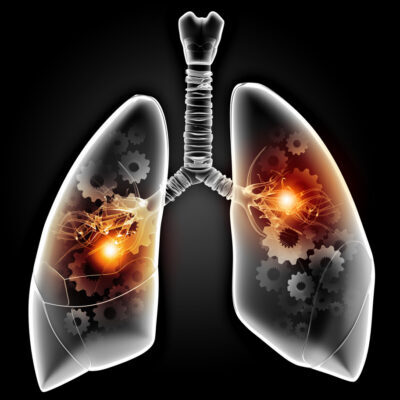Breast Cancer Awareness is supported and celebrated every October. Certainly, FLASS is here to advocate for a cure and celebrate survivors every year.
Breast Cancer in Lungs: New Awareness of Secondary Cancer
You might not realize that breast cancer can also invade the lungs. That’s right, you can actually have breast cancer in the lungs. However, before we discuss this unique issue, let’s update a few major statistics in honor of Breast Cancer Awareness, 2021.
The Backstory: Updating Your Knowledge

FLASS Champions the Development of a Cure to End the Invasion of Breast Cancer in the Lungs.
Every October we are surprised by the number of victims that breast cancer claims.
- By the end of 2021, doctors either have or will diagnose 281,550 new cases in the US.
- Likewise, they will or already have found 49,290 new cases of non-invasive (in situ) breast cancer.
Mortality is Still High
- Unfortunately, we sadly report that an estimated 43,600 women will die from breast cancer in the U.S. in 2021.
- The sad fact is that every 2 minutes a woman is diagnosed with this disease in the United States. This fact is sadly verified by the experts at the National Breast Cancer Foundation.
- Men are not immune to this disease. And, In 2021, doctors will diagnose an estimated 2,650 men. And 530 of them will die.
Breast Cancer in the Lungs: An Ugly Invasion
We’re pleased to say that at this point, 63% of the cases are diagnosed at a localized stage. This means, “…there is no sign that cancer has spread outside of the breast…” Such patients have a 99% survival rate for at least 5 years.
Metastasis: A Secondary Threat

Breast Cancer Enters the Lungs and Becomes Even More Deadly to Both Women and Men.
However, metastasis or secondary cancers can appear during or after cancer. We are not saying that breast cancer causes lung cancer. They are two different types of cancer.
However, breast cancer cells can metastasize in the lungs. “In many early breast cancers the lifelong expectancy exposes the patients to the possibility of developing second primary cancer.”
Therefore, we know, “Many studies have reported that by 10 yrs. of early breast cancer diagnosis, about 10% of survivors have a high risk of developing a subsequent malignancy…”
And we must add that the studies show breast cancer cells in the lungs to be the cause of the largest number of such cases.
Symptoms of Breast Cancer in the Lungs
First of all, you could have or not have any symptoms. However, your doctor might discover a tumor on a treatment follow-up plan. He might see it on a chest CT (computed tomography) routine scan.
However, a lung metastasis might show symptoms. Additionally, they may include these classic problems.
- The patient could experience pain or discomfort in the lung.
- Shortness of breath and wheezing are common symptoms.
- An afflicted person could have a persistent cough or a cough that brings up blood and mucus.
The Difficult Diagnosis of Breast Cancer Metastasis in the Lungs

Diagnosis of This Lung Attack Is Made Difficult By the Lack of Definite Symptoms. Some Victims Don’t Even Exhibit Symptoms.
In fact, it is sometimes difficult to tell if a patient is experiencing lung metastasis from breast cancer, or a common, coincidental upper respiratory problem.
“If your doctor suspects lung metastasis, he or she is likely to order imaging tests such as a chest CT or a PET (positron emission tomography) scan.”
If your physician finds a tumor, the first concern is to discover if it is primary lung cancer. That could happen. A patient could be stricken with lung cancer that had no relationship to the current or previous occurrence.
“If you’re a past or present smoker, this is especially critical.” You see, “A true lung cancer would require different types of treatment than a metastasized breast cancer does.”
Your doctor can order additional tests to confirm a diagnosis. For procedures involving the lungs, your doctor will involve a thoracic surgeon, pulmonologist, or interventional radiologist who specializes in the diagnosis and treatment of lung conditions.
Time for Tests?
Your pulmonologist will order tests like the following if he or she suspects Breast Cancer has metastasized in the lungs.
1. The doctor needs an “examination of a sample of your mucus under a microscope.”
2. You will need a Bronchoscopy. The specialist will insert a flexible, lighted tube through your airway into your lungs and take a look. He also might take a sample.
3. The next possibility is that you will require a lung needle biopsy to get a good look at possible cancer. In this test, “a doctor inserts a needle through the skin and into the lung to remove a small sample of tissue.”
4. Surgery: Finally, the doctor performs surgery to remove the area of concern for examination.
After the Tests: Options and Decisions for Treatments
After a tissue sampling, it is critical that the doctor confirms that cancer has indeed metastasized to the lung. You see, he will need to test it for other traits. Those traits influence your options for treatment.
We want you to know that the treatments for any type of cancer in the bone, brain, liver, and lung are systemic in nature. To clarify, this simply means they treat cancer throughout the body.
The most common treatments for metastatic cancer in any location (bone, brain, lung, or liver) are systemic medications. These medications treat cancer throughout the entire body.
First You Need Systemic Therapies to fight Diseased Cells in the Lungs

Saving Lives and Finding Effective Treatments Requires Research. FLASS Asks For Your Support.
So, if you have this disease in your lungs, your systemic medications include will include chemotherapy or hormonal therapy. You might have other targeted therapies. In Addition, you also could have bone-strengthening medication.
Sometimes You Need Local Therapies Also: More Invasive Attacks on the Cancer in the Lungs
We call therapies directed right at the new location of cancer, “Local Therapies.” They are not always optimal for metastases. However, they are sometimes required. These include radiation therapy and surgery. Learn more from this trusted online resource.
As always we thank you for reading the blog at FLASS. In addition, we invite you to visit us again soon. We’ll bring you news you can use from the world of respiratory diseases. Be Safe.

